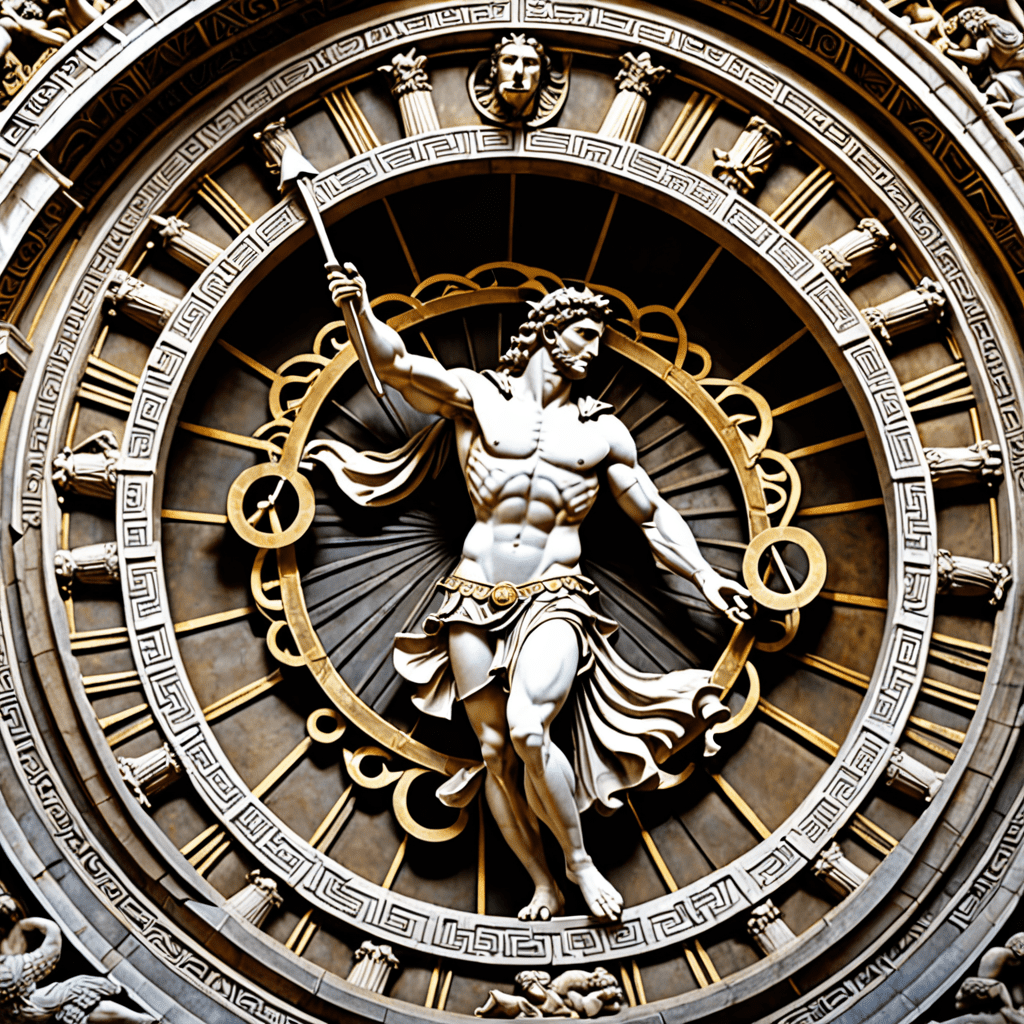Exploring the Mythical Islands in Filipino Folklore
I. Introduction: A Tapestry of Myths and Legends
The Philippines, an archipelago of over 7,000 islands, holds a rich tapestry of myths and legends. Among these captivating stories are tales of mythical islands, hidden paradises shrouded in mystery and wonder. These islands, often called enchanted islands, serve as a testament to the vibrant imagination and cultural heritage of the Filipino people. Their stories unveil ancient beliefs, societal values, and the enduring power of storytelling.
II. The Enchanted Islands: A Realm of Fantasy and Wonder
These mythical islands are not merely geographical locations but portals to a realm of fantasy and wonder. They are often described as places of extraordinary beauty, where lush forests meet crystal-clear waters, and exotic creatures roam freely. The islands are said to be inhabited by supernatural beings, including spirits, fairies, and mythical creatures. These beings, sometimes benevolent and sometimes mischievous, play a significant role in the lives of those who encounter them.
III. The Significance of Mythical Islands in Filipino Culture
The mythical islands hold a deep cultural significance in the Philippines. They represent a connection to the past, a reflection of ancient beliefs and traditions. These islands often serve as a backdrop for stories about bravery, love, and the consequences of one's actions. They embody the values of hospitality, respect for nature, and the importance of community.
IV. Notable Mythical Islands and their Stories
One of the most famous mythical islands is "Pulo ng Paraiso," or Paradise Island. This island is said to be a hidden paradise where all desires are fulfilled. Another notable island is "Isla ng Matulog," or the Island of Sleep. This island is believed to be inhabited by people who have fallen asleep for centuries and are waiting to awaken. Other notable islands include "Isla ng mga Engkanto," the Island of Fairies, and "Isla ng mga Tikbalang," the Island of the Tikbalang, a mythical creature with a horse’s head and a human body. Each island holds its own unique story, revealing aspects of Filipino culture and beliefs.
V. The Role of Spirits and Supernatural Beings
These magical islands are often populated by spirits and supernatural beings. These beings can be benevolent, like the "diwata," or fairies, who are known for their beauty and kindness or they can be mischievous, like the "tikbalang," a creature known for its trickery and love of pranks. The "engkanto," another type of spirit, are believed to reside in the forests and are often associated with the protection of nature. The interaction of humans with these supernatural beings often serves as a lesson about respect, humility, and the consequences of disrespecting the environment and the spirits.
VI. Thematic Exploration: Themes of Adventure, Love, and Morality
The stories of mythical islands often explore universal themes like adventure, love, and morality. Tales of courageous heroes venturing into uncharted territories to face challenges and overcome obstacles are common. These adventures often involve searching for lost treasure, rescuing loved ones, or seeking knowledge.
Tales of love, both romantic and familial, also play a significant role in mythical island stories. Stories of forbidden love between humans and supernatural beings often highlight the complexities of relationships and the consequences of defying societal norms. The theme of morality is interwoven throughout these narratives. Many tales illustrate the importance of respect for nature, the consequences of greed, and the power of kindness. Through these stories, Filipinos learn about their responsibilities to their communities and the natural world.
VII. Theories on the Origins of Mythical Islands
The origins of these mythical islands are rooted in the rich history and culture of the Philippines. Some scholars believe that these stories originated from pre-colonial beliefs and traditions. The belief in spirits and supernatural beings, the reverence for nature, and the importance of oral storytelling all contributed to the creation of these captivating tales.
Another theory suggests that these islands are a reflection of the Philippines' geographical reality. The archipelago's diverse landscape, with its numerous islands, could have inspired these tales of hidden paradises and unexplored territories. The mystery surrounding these islands may also be influenced by the stories of explorers and traders who encountered previously unknown islands during the pre-colonial period. These voyages and encounters likely fueled the imagination and sparked the creation of these enchanting tales.
VIII. The Influence of Pre-Colonial Beliefs and Practices
Before the arrival of the Spanish in the 16th century, Filipinos practiced their own indigenous beliefs and traditions. These beliefs included animism, the worship of nature spirits, and the belief in the importance of ancestors.
The mythical islands reflect these pre-colonial beliefs. The presence of spirits, fairies, and mythical creatures often associated with specific aspects of nature exemplifies the reverence for the natural world. The importance of these spirits in the lives of the inhabitants further highlights the strong connection between humans and nature. Stories of ancestors returning to their ancestral land or being reborn on these islands reveal the importance of familial ties and the connection to the past.
These stories also reflect ancient Filipino practices. The use of traditional medicine, the ritualistic offerings to spirits, and the importance of community reflect the ways of life of the pre-colonial Filipinos. Through these mythical islands, we gain a glimpse into the richness and complexity of Filipino culture before the arrival of outside influences.
IX. The Evolution of Mythical Islands in Contemporary Literature and Art
The mythical islands of Filipino folklore continue to inspire contemporary writers and artists.
From novels and short stories to paintings and sculptures, these islands are reinterpreted and reimagined. Writers use these islands as settings for contemporary narratives, exploring themes of identity, environmentalism, and social justice. Artists draw inspiration from the beauty and mystery of these islands, creating visual representations that capture the essence of Filipino folklore.
Through contemporary interpretations, these mythical islands remain relevant and continue to resonate with audiences today. They serve as a reminder of the rich cultural heritage of the Philippines and the enduring power of storytelling.
X. Conclusion: Preserving the Legacy of Filipino Folklore
The mythical islands of Filipino folklore are a treasure trove of cultural heritage. They represent the creativity, imagination, and spirit of the Filipino people. It is crucial to preserve these stories and pass them on to future generations.
By sharing these tales, we can ensure that the rich cultural heritage of the Philippines is not lost. These stories provide valuable insights into Filipino beliefs, values, and history. They also serve as a source of inspiration and entertainment for generations to come.
FAQ:
1. What are some notable mythical islands in Filipino folklore?
Some notable mythical islands include "Pulo ng Paraiso" (Paradise Island), "Isla ng Matulog" (Island of Sleep), "Isla ng mga Engkanto" (Island of Fairies), and "Isla ng mga Tikbalang" (Island of the Tikbalang).
2. What is the significance of mythical islands in Filipino culture?
The significance of mythical islands lies in their role as a reflection of ancient beliefs, societal values, and the enduring power of storytelling.
3. What is the role of spirits in mythical island stories?
Spirits play a vital role in mythical island stories, often serving as guardians, protectors, or even tricksters. Their interaction with humans often teaches valuable lessons about respect, humility, and the consequences of our actions.
4. What are some themes explored in mythical island stories?
Common themes explored in these stories include adventure, love, morality, the power of nature, and the importance of community.
5. How have mythical islands evolved in contemporary literature and art?
These islands are being reinterpreted and reimagined in contemporary works, serving as settings for exploring themes of identity, environmentalism, and social justice.




